I was nominated by my friend Judy Dykstra-Brown to post one favorite travel picture a day for ten days without explanation, then to nominate someone else to participate. That’s 10 days, 10 travel pictures, and 10 nominations. I may not make it to the end of ten days, but for now I nominate Cindy Noake . Please link to me so I know you have participated. If you are not interested, no problem. Nowhere in the rules does it say you can’t guess where the photo was taken and that I can’t agree if you are right. Derrick
Author: admin
“I’m Going Shopping”
Determined to comply with our current Covid constraints Danni and Ella, to be joined by Elizabeth, for whom entry to the house was forbidden, were on their way for a tour of the garden when






a very heavy downpour dumped a damper on the proceedings. Raindrops dripped from solanums, crab apples, weeping birch, and pelargoniums. Even Absolutely Fabulous hung her bedraggled golden locks.
Fortunately the rain had ceased by the time they arrived. Ella made directly for the house in search of her favourite mice and other toys. Danni made an effort to explain restrictions and her daughter





diverted in search of monsters. She had to emit the roars herself.



Jackie led her to the dragons, but she became more engrossed in the unicorn and the Waterboy.

When Elizabeth arrived, her granddaughter introduced her to me.



Jackie had placed dry cushions on the benches on which Danni, Ella, and Elizabeth sat while opening one of our presents to our great niece. Like any other self-respecting child not yet two, Ella handed the enclosed parcel to her grandmother, and set off with the bag announcing “I’m going shopping”, leaving her mother to admire the Sloth Christmas jumper.


The sound of the horn on our coffee trolley alerted us to the fact that Ella had escaped into the house and was now repeatedly striking the reception bell with the flat of her hand. We enjoyed a reasonably intelligible conversation and she turned her attention to the toys strewn about the sitting room.


The sun made feeble attempts to throw light on the proceedings before it was time for
little tarts and departure.
Becky joined us for the weekend. The three of us dined on Mr Chan’s excellent Hordle Chinese Take Away fare with which Jackie drank Hoegaarden and our daughter and I drank Mendoza Malbec 2019.
Travel Challenge, Day 2
I was nominated by my friend Judy Dykstra-Brown to post one favorite travel picture a day for ten days without explanation, then to nominate someone else to participate. That’s 10 days, 10 travel pictures, and 10 nominations. I may not make it to the end of ten days, but for now I nominate Andrew Petcher. Please link to me so I know you have participated. If you are not interested, no problem. Nowhere in the rules does it say you can’t guess where the photo was taken and that I can’t agree if you are right. Derrick
The Decameron
This morning I got my head around Judy’s Holiday Challenge and published my earlier post of today – the first of 10.

This put me in mind of Giovanni Boccaccio’s Decameron which I read 60 years ago in my Folio Society fifth impression of 1960. The work has been translated by Richard Aldington.
Despite the exquisite, mostly erotic, aquatints of John Buckland-Wright, my recollection of the stories – 100 to be related in 10 days – does not stretch that far. I will therefore reproduce most of the last paragraph of the introduction.
‘The book was probably written between 1348 and 1353 (the oldest known manuscript of it was made in 1368), and Boccaccio was therefore about 40 when he finished it. He brought to it his whole experience of life, shot through for so many years by his desire for ‘Fiametta’, his shrewd but tolerant insight into the hearts and minds of men and women of all kinds, and a literary skill which had been developed by a lifetime of devoted practice. His hundred tales were gathered from many sources, French, Italian and Oriental. All of them were transmuted by his realism and sense of style, so that they were accepted at once as models of their kind. The manuscript was copied so often that in a few years it was known all over western Europe, to be translated and imitated again and again. It was printed for the first time, apparently in Florence, in 1469 or 1470. Since then innumerable writers have used its stories or acknowledged its influence – among them Lope de Vega in Spain, Moliere in France and Lessing in Germany. The first complete English translation did not appear until 1620, but long before that Chaucer had taken from Boccaccio the idea of a linked series of stories, and the realistic, humorous treatment of them, to make his Canterbury Tales, five of which are directly borrowed from The Decameron: the tales told by the Franklin, the Reeve, the Merchant, the Shipman and the Clerk. Shakespeare followed suit in All’s Well that Ends Well and Cymbeline, and after him came Fletcher, Marston, Tourneur, Otway, Dryden, Pope, Keats, Tennyson, Swinburne and many more…..’
This edition comes in a two volume set.









These, including the frontispiece portrait above, are the illustrations from ‘The First Five Days’.
Elizabeth joined us for dinner and convivial conversation. Jackie produced tender roast lamb, crisp Yorkshire pudding, roast potatoes and parsnips; firm Brussels sprouts, carrots and green beans, with meaty gravy, followed by apple pie and cream. My sister and I finished the Recital and my wife drank Hoegaarden.
Travel Challenge, Day 1
I was nominated by my friend Judy Dykstra-Brown to post one favorite travel picture a day for ten days without explanation, then to nominate someone else to participate. That’s 10 days, 10 travel pictures, and 10 nominations. I may not make it to the end of ten days, but for now I nominate Tootlepedal . Please link to me so I know you have participated. If you are not interested, no problem. Nowhere in the rules does it say you can’t guess where the photo was taken and that I can’t agree if you are right. Derrick
An Internationally Renowned Work
When, in August 1898, Czar Nicholas II of Russia called for all ‘the nations to join a conference for the limitation of armaments’ cynics mistrusted his motives, believing this was because his nation was so far behind the major powers with whom he would never be able to catch up without such breathing space. We learn this from ‘The Steady Drummer – The Hague: 1899 and 1907’, being the 5th Chapter of Barbara W. Tuchman’s ‘The Proud Tower’.
Tuchman chronicles the two conferences that took place in these years, making it clear that every nation involved, including the US and European in 1907 supplemented at the insistence of the Americans by the Latin-American States, would put their own interests ahead of the others; the strong and better armed belligerents wanted it kept that way; disarmament and arms reduction were out of the question. Some progress was eventually made on the conduct of war, which, of course, would come to be blatantly ignored during the next half century. Humanity’s natural competition, territorial greed, and distrust prevailed.
I finished reading this section of the book this afternoon.
I don’t know when I last read Charles Dickens’s ‘The Adventures of Oliver Twist’, but it would have been before I began blogging, otherwise I would have scanned and featured before now my Folio Society edition of 1984 with



























Charles Keepings’s inimitable illustrations sprawling across the pages, the first of which is the frontispiece.
Christopher Hibbert has written a useful introduction. I have not felt it necessary to review such an internationally well-known work.
This evening we dined on Jackie’s spicy pasta arrabbiata with tender runner beans. The Culinary Queen finished the Greco di Tufo and I drank more of the Recital, involving an encore from another bottle.
A Frosty Morning
On a crisp-cold frosty-bright morning we drove early to Saint John the Baptist Churchyard to make photographs showing it in a better light than yesterday.



Bramble stems and various leaves in the hedgerows opposite the cross-carved entrance gate were outlined in bright white pigment. The gate picture is Jackie’s.


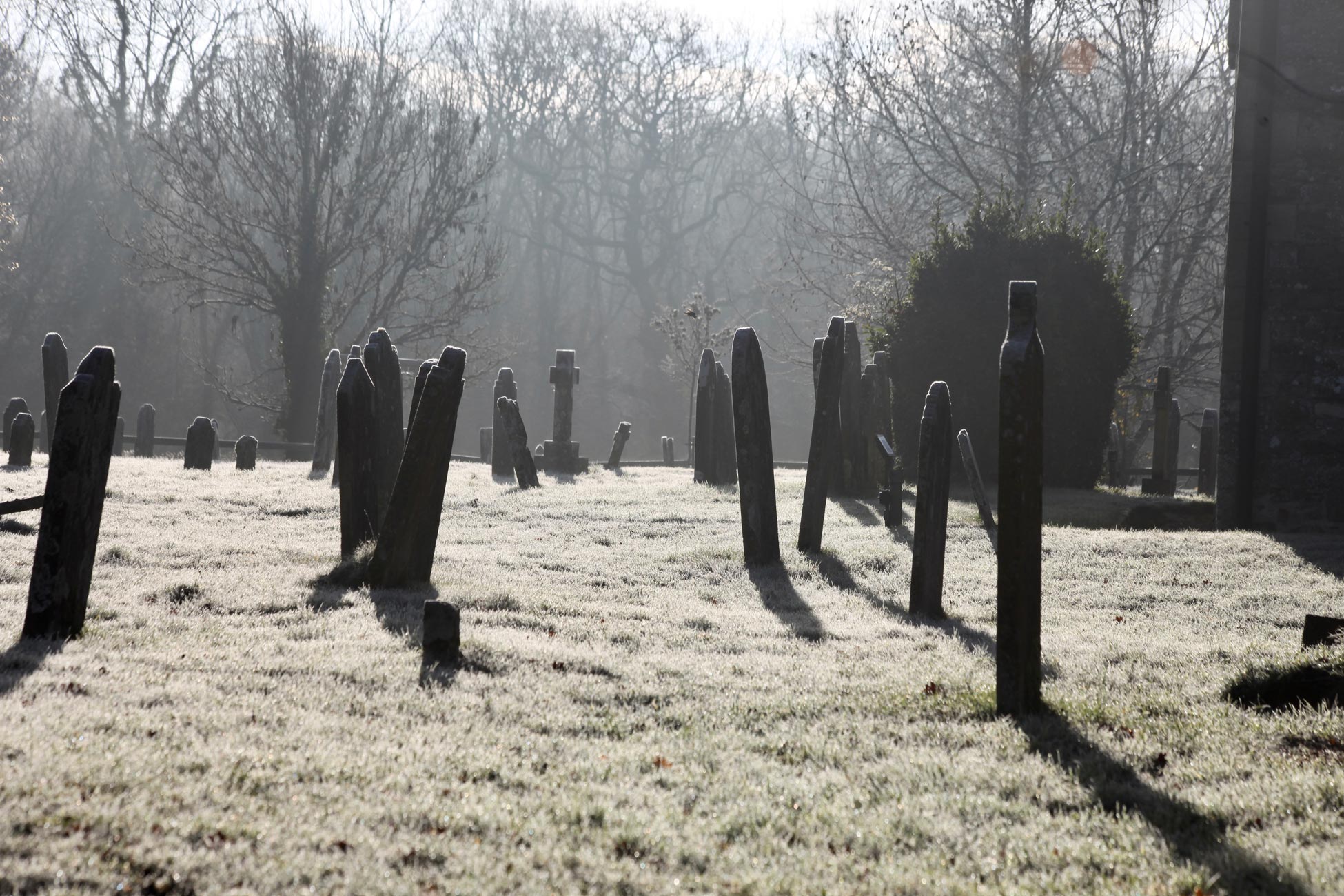










We both made general views. The more colourful three of the last four in this gallery are by Jackie, who tended to look out to


the views beyond; and up to


a singing blackbird trilling to the crescent moon.



We also photographed each other,
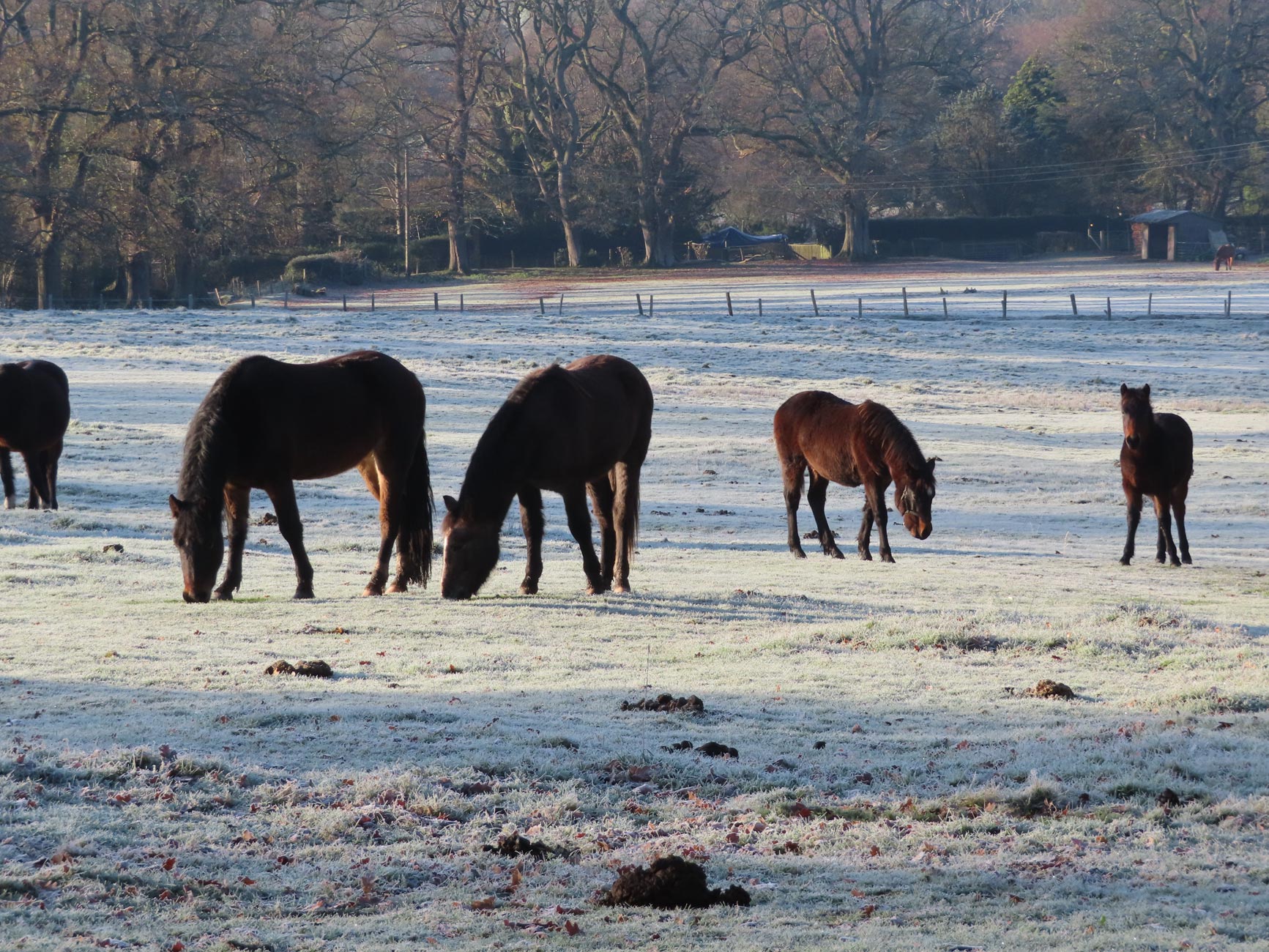


and grazing ponies in frosty fields. Mine is the third image.
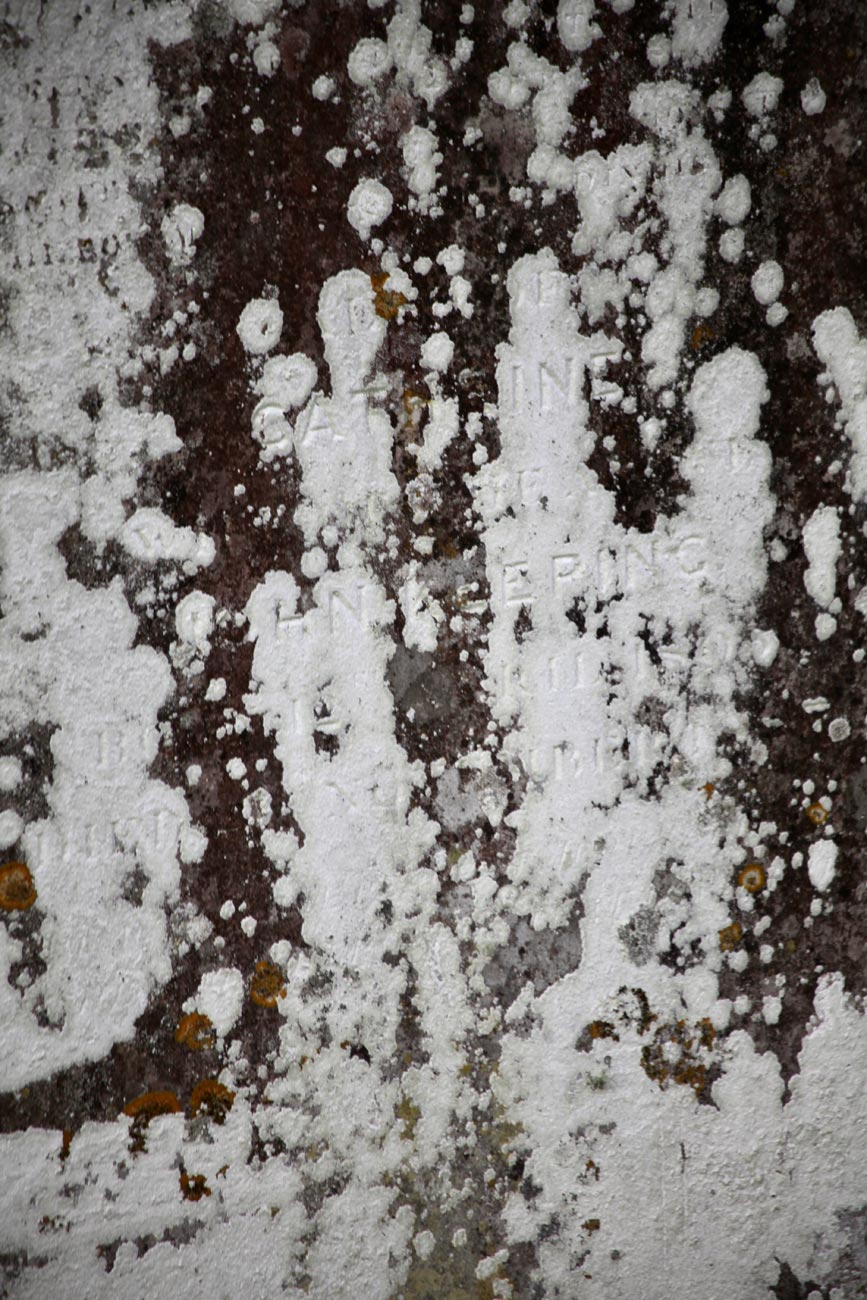








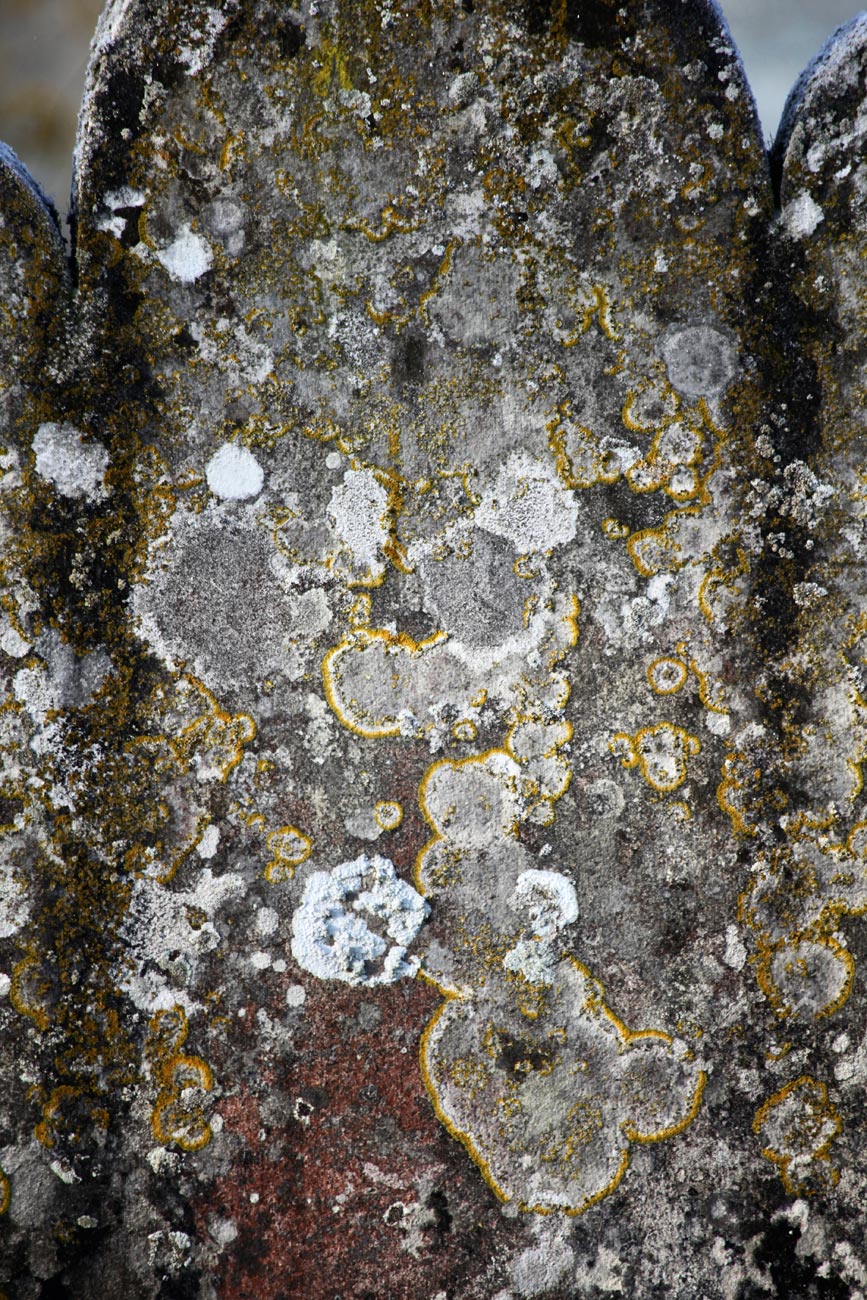
I focussed on the colours and textures of the lichen


and moss.


We each had a different take on the ancient yew tree.



A frosted wreath, an autumnal oak, and a fallen stone, caught my eye.
Jackie’s individual tombstones included
that of Hetty Ada Plumbly and her 3 day old son, Frederick. Hetty was the wife of Archibald George Plumbly (1895-1970). Was the death of the mother occasioned by little Frederick’s birth? Did Archibald, who had no more children, never marry again?.

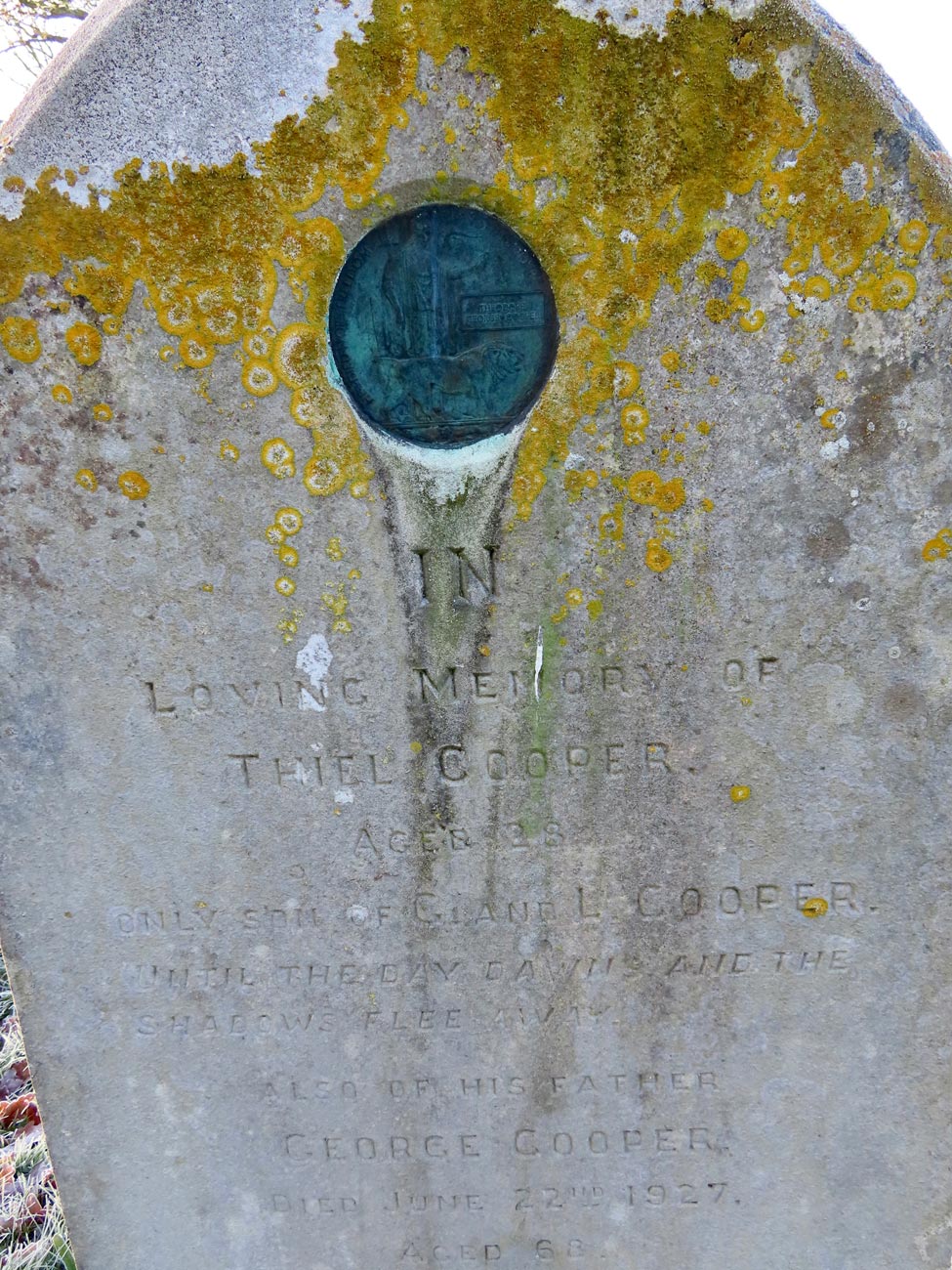

Jackie also found two stones framing death medals: those of Theodore George Cooper, joined later by his father, George; and of Edward Drodge who shared his mother’s grave. Death medals were sent to the relatives of every casualty of The Great War. Given that Edward’s mother, Alice Emily, predeceased her son. we wonder who inserted the medal.


Two among the Canadians who died in the Second World War, namely Flying Officer E Stollery and Sergeant B.W. Turner lie in the war graves section.


We were unable to decipher the wording on the gravestone of an 8 1/2 year old girl also photographed by the Assistant Photographer.
Her last gravestone detail consists of a hand, despite missing two fingers, grasping a feather and a glass ball.


Jackie also produced images of the church roof and weather vane.


On our return home we enjoyed the play of light on Church Lane and the playfully decorated postbox on Pilley Hill.
I spent the rest of the day drafting this, and was certainly ready for dinner consisting of baked gammon and herby pork chipolata sausages; creamy mashed potatoes; juicy ratatouille; crunchy carrots and cauliflower, with which Jackie drank Hoegaarden and I drank more of the Recital.
A Visible Contrast
The Needles foghorn beckoned us all the way to the coast at Barton on Sea this morning. All other sounds were muffled by clouds of tiny water droplets known as mist.


We took the route through Angel Lane where Jackie parked the Modus and I photographed



misty scenes






and more visible views of the banks of the ditch.





The silhouettes of the few dog walkers on the clifftop at Barton could not have contrasted more with the many enjoying yesterday afternoon’s sunset.
After visiting the pharmacy at Milford on Sea we progressed to Keyhaven harbour where there was not much to be seen:







Bob Barnes reflected in the first picture, a fisherman, gulls, swans, and a few boats.



Later, I was able to photograph Bob and his reflection once more as we engaged in a socially distanced conversation beside
a memorial bench to Peter and Dorothy Thomas. Our discussion was recorded by Jackie, who also photographed





walkers on the spit, the yacht club, a bird on a wire, and a pair of preening mallards.
Another dog walker approached Pennington Lane as we passed on our way to





Boldre’s Saint John the Baptist Churchyard on Church Lane.


Field horses grazed beneath the graveyard, where, above the soil, a mossy, decomposing stump gradually merged with the soil beneath which humans from days gone by engaged in the same process.
This evening we dined on toothsome roast gammon; golden creamy mashed potatoes; pure white cauliflower; and most moist ratatouille, with which Jackie drank Hoegaarden and I drank Recital 2018.
Silhouettes At Sunset
We set out for a drive in the forest an hour before sunset.
There were a number of people out riding, such as this young lady on Barrows Lane. They were usually in no particular hurry. Neither were we.
As I emerged from the Modus high on Holmsley Passage, a dog in a Land Rover fixed me with its baleful beady eye.
A number of dog walkers, like this woman with her pair, were also taking the air.
A couple of motor cyclists followed a fast moving car, the driver of which did his best to splash me as he sped past. Fortunately I had anticipated the shower and (with poetic licence) nipped over the bank in the foreground.








The late sun burnished both landscape and ponies. The second black and white subject stretched its neck whilst emitting an extended whinnying.






Alongside Bisterne Close a group of ponies seemed intent on stripping the holly branches until, with one accord, they trooped off into the woodland and out of sight.
We just had time to catch











sunset at Barton on Sea where groups of well distanced visitors provided me with a choice of silhouettes. A young family played cricket on the green. The ball was struck in my direction, my reflexes kicked in, and I bent at the knees in an attempt to scoop it up. I couldn’t get down far enough and had to plead dodgy pins. My pride hurt the most.
This evening we dined on Jackie’s savoury omelette-topped rice served with a quartet of prawn preparations, namely salt and pepper, hot and spicy, tempura, and skewered in a skein of shredded potato. The Culinary Queen and I both drank Greco di Tufo 2019, a most mellow Italian white from Lidl.
Changing By The Second
Wild wind howled and piercing precipitation rattled the roof throughout the night and well into the morning.
Jackie photographed and I e-mailed this image of crooked hand from our 200 year old long case clock to Martin Fairhurst of Dials in Lymington who will repair it. Even with the bend the clock keeps perfect time and chimes seven minutes late according to the point of the digit, as if there were no crook in it.
After lunch I made a start on a month’s ironing. When the sun sneaked out I unplugged the iron and we sped after it. Since it had made the effort we would have been rude not to.




The field alongside South Sway Lane, once home to pony Gimlet and her foal,
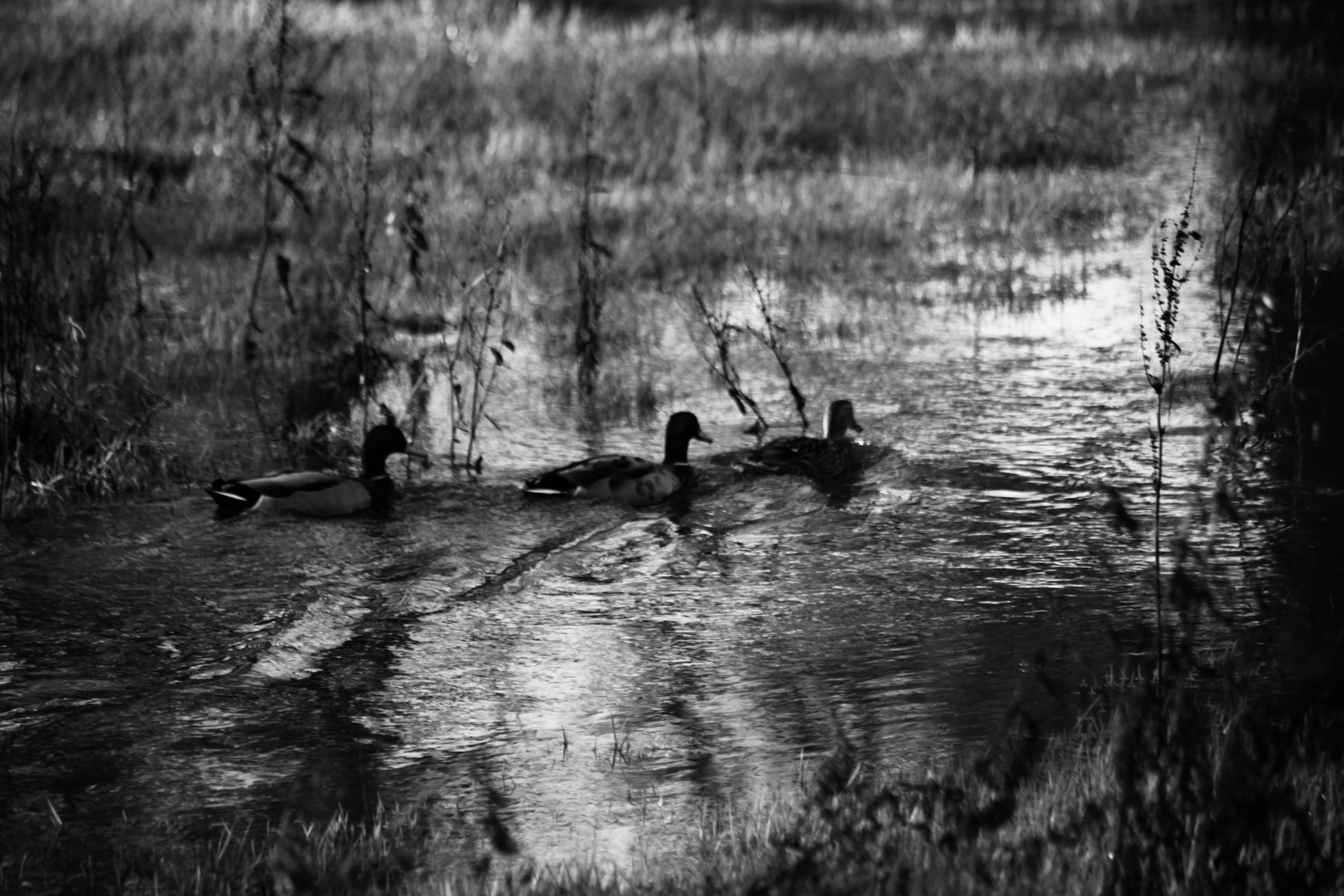


was now occupied by a nomadic Mallard family.
A drain was overflowing, suggesting that the lane itself will be flooded soon. Last year it became impassable.
The rain had definitely not conceded the skies. Rainbows followed us around



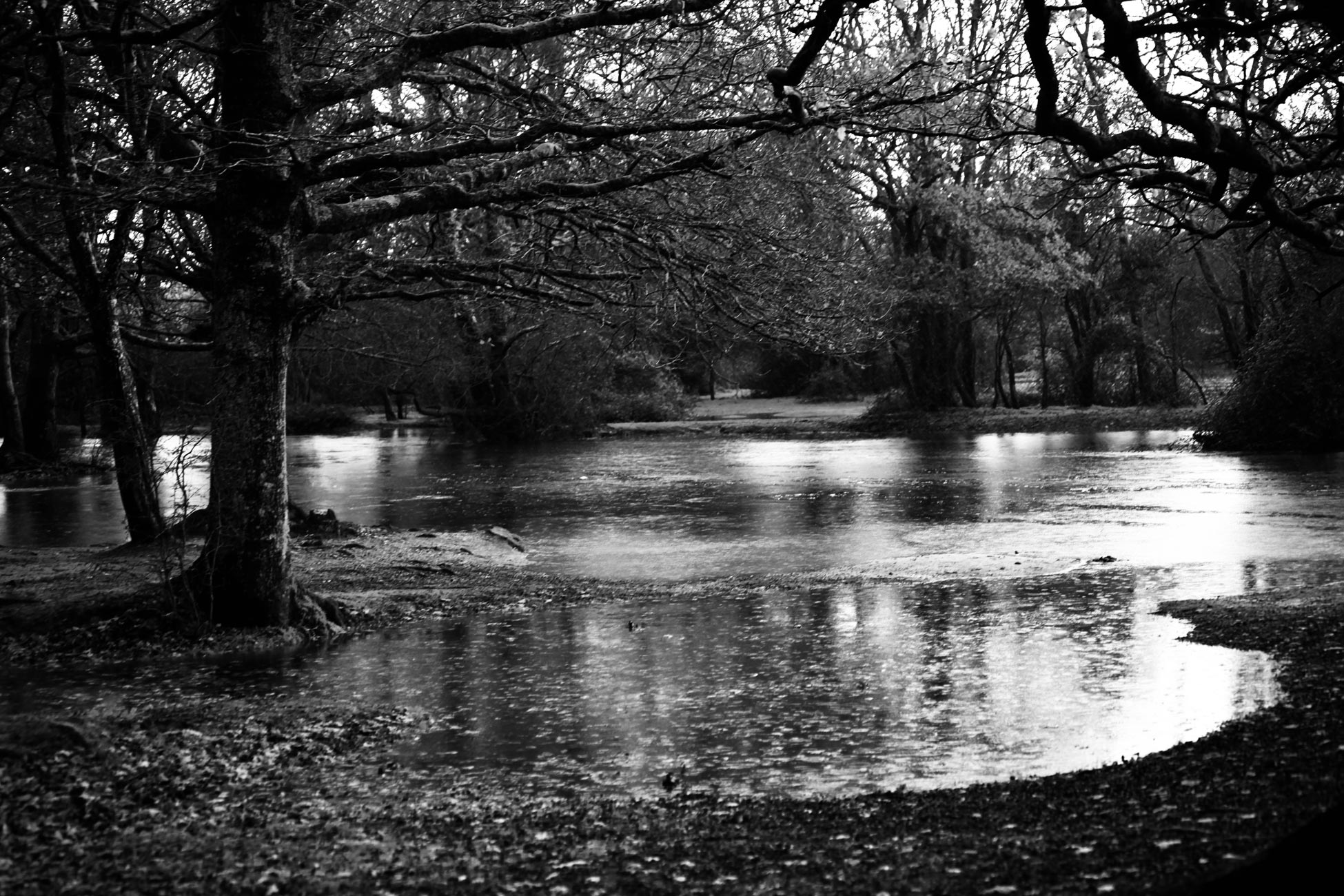



The fast-flowing, rippling and bubbling Balmer Lawn stretch of Highland Water had overflowed its banks. Within seconds of my striding out to photograph it the clouds rolled in, rain hammered down, and my woollen jacket soon took on the scent of damp sheep.


On the signal of the click of my camera a reflective crow was instantly on the wing.
Just around the corner the sun emerged once more, cast long shadows, and burnished trees against a dark slate sky.






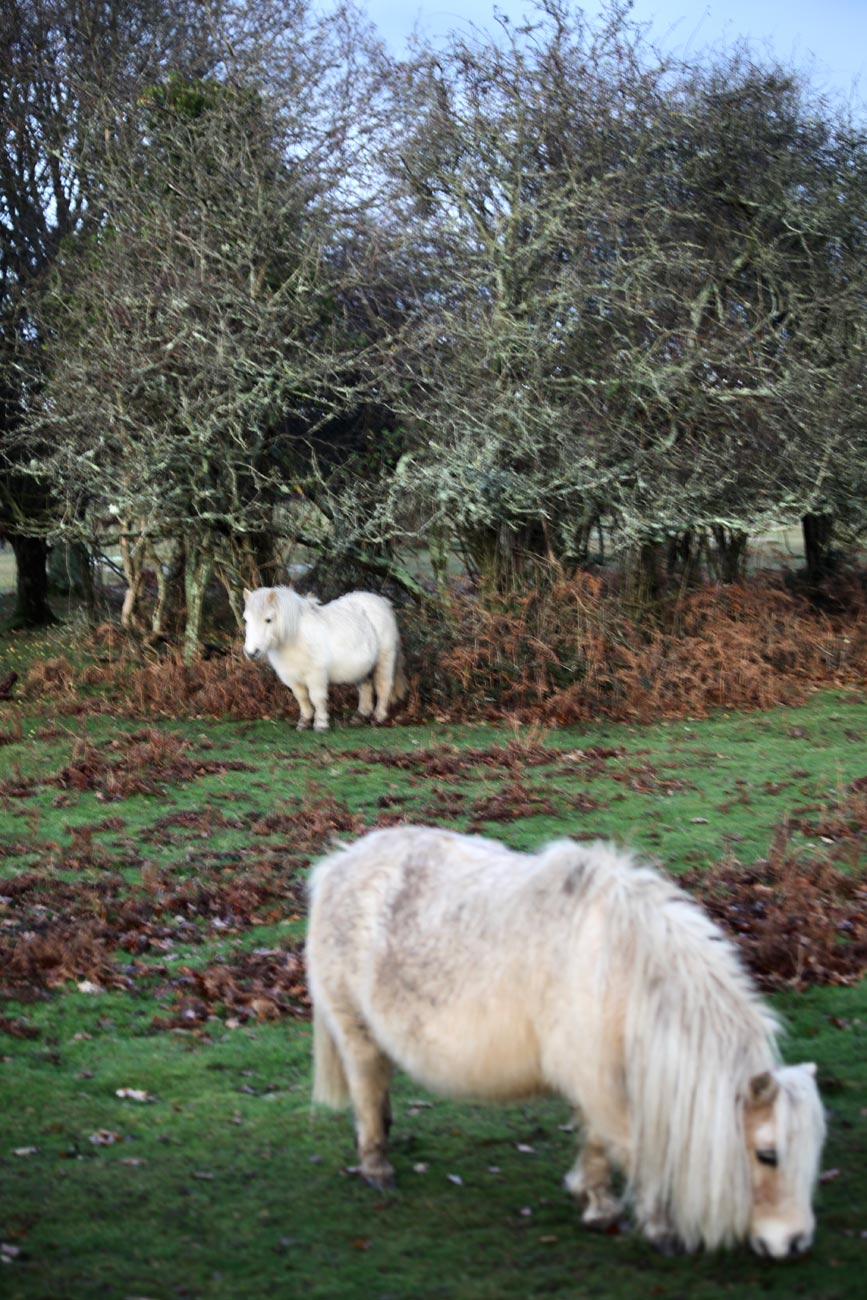
Lulled into a false sense of security I walked across a muddy field to photograph ponies sheltering among the trees. They knew that I would soon be walking through torrential bead curtains.


Houses and trees were silhouetted against the clouds’ bonfire smoke. The skies were changing by the second.
I heard gleeful laughter emanating from a parked people carrier whose occupants were impressed by the ponies. As I raised my camera in polite request


the mother of the boys cheerfully wound her window down and, with a smile, said “put your tongue back in”. This was, of course, the signal to stick it out further. Although rain still rolled down the vehicle it had stopped falling from the skies.
As I drafted this post the heavy rain clattered throughout against my window.
This evening we dined on oven fish and chips, green peas, cornichons, and pickled onions with which Jackie drank Hoegaarden and I finished the Coonawarra.

















